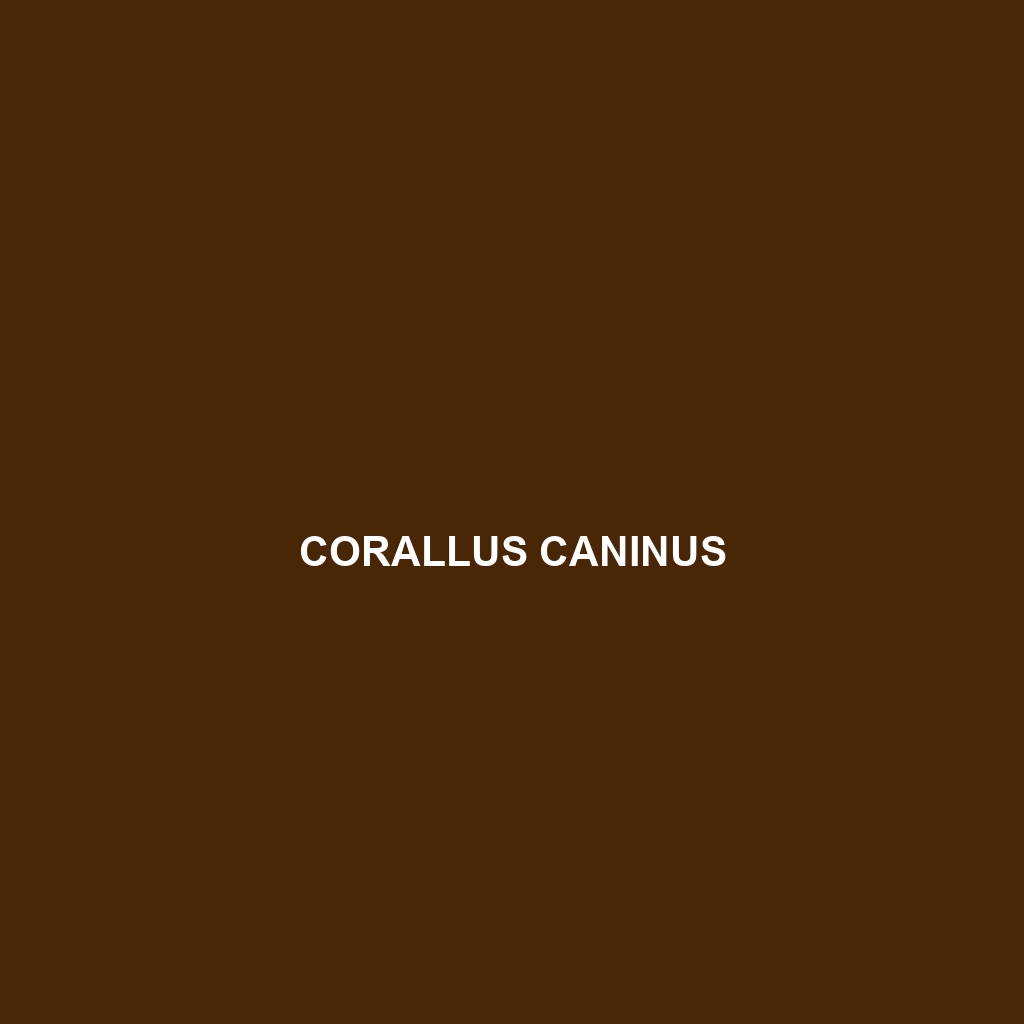Description of Corallus caninus
Common Name: Corallus caninus
Scientific Name: Corallus caninus
Habitat: Corallus caninus, commonly known as the green tree python, is primarily found in the rainforests of New Guinea, the Solomon Islands, and parts of Indonesia. Its habitat includes dense arboreal environments where it can camouflage among the foliage, taking shelter in trees and shrubs. This species thrives in humid, tropical conditions, often seen in the understory and canopy layers of these biodiverse locales.
Physical Characteristics: The green tree python typically reaches an impressive length of 4 to 7 feet, although some individuals can grow up to 8 feet long. Its most distinctive feature is its vibrant green coloration, which can vary to shades of yellow and blue depending on environmental factors and age. The snake has a slender body and a triangular head, equipped with heat-sensing pits that allow it to detect warm-blooded prey. Juveniles are often born with bright yellow or blue patterns that fade into green as they mature.
Behavior: Corallus caninus is primarily nocturnal, exhibiting arboreal behavior as it spends most of its time coiled on branches, waiting for prey to pass by. This species is known for its unique method of hunting, often striking with precision. It is also a relatively docile snake, making it popular among reptile enthusiasts. During the breeding season, males engage in combat displays to compete for mating rights with females.
Diet: The diet of Corallus caninus consists mainly of small mammals, birds, and occasionally reptiles. This constrictor ambushes its prey using a stealthy approach and then constricts it before ingestion. The green tree python’s feeding habits are adapted to its arboreal lifestyle, making it an effective predator in its forest habitat.
Reproduction: Corallus caninus reaches sexual maturity at around 2 to 3 years of age. Breeding typically occurs from spring to early summer, and females give birth to live young, usually ranging from 10 to 30 offspring. After a gestation period of about 4 to 6 months, the young are independent and resemble miniature adults, showcasing the vibrant colors typical of this species.
Conservation Status: Currently, Corallus caninus is listed as “Least Concern” on the IUCN Red List. However, habitat destruction and illegal pet trade pose potential threats to its populations in the wild. Conservation efforts are vital to ensure that their natural habitats remain protected.
Interesting Facts: One fascinating aspect of Corallus caninus is its ability to change color with age, transitioning from bright yellow or blue juvenile hues to the iconic green as they mature. Additionally, this species has a unique method of thermoregulation, curling tightly around branches to maintain body temperature.
Role in Ecosystem: Corallus caninus plays a significant role in its ecosystem as a predator and prey species. It helps to regulate populations of small mammals and birds, contributing to the ecological balance within its rainforest habitat. Additionally, it serves as a food source for larger predators, emphasizing its importance in the food web.
This description utilizes relevant keywords while providing essential information about Corallus caninus, formatted in HTML for web publication.
